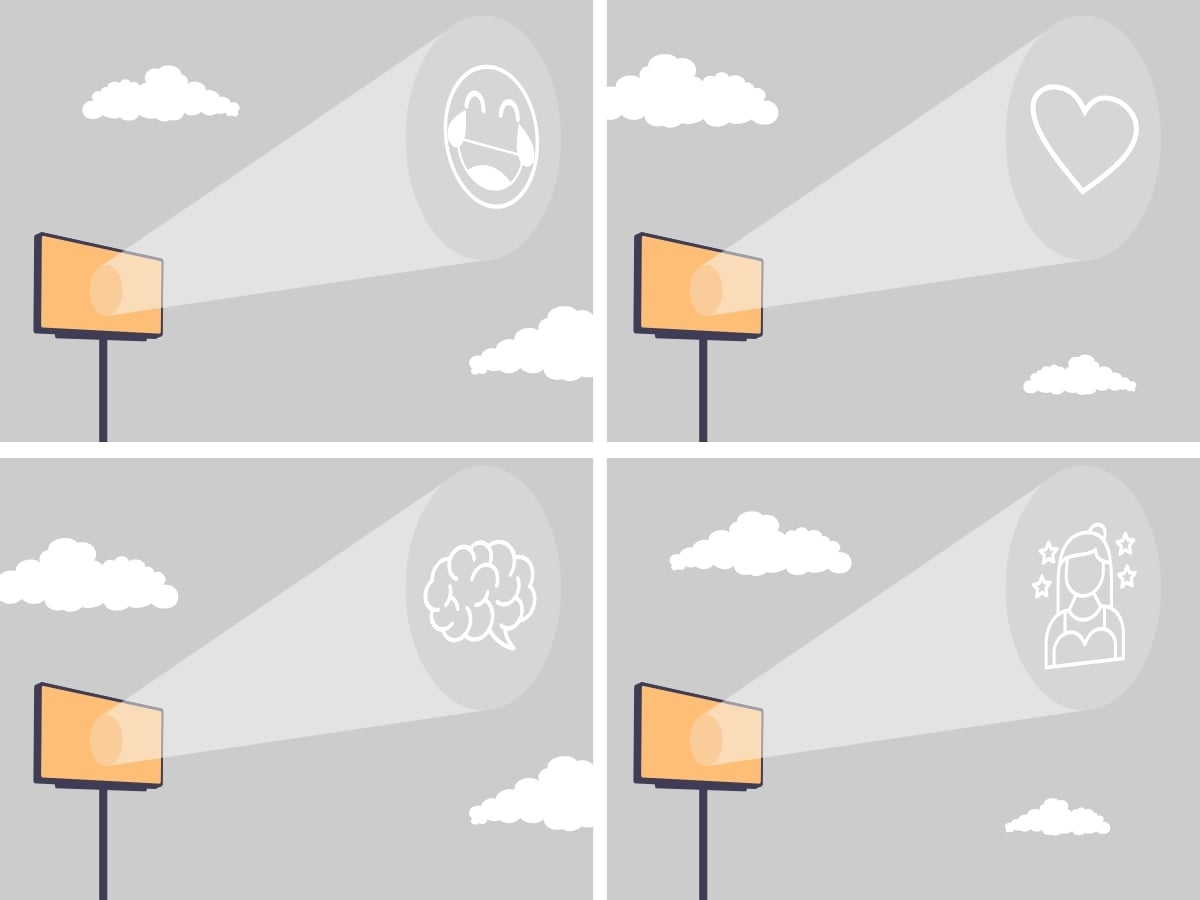Any advertising professional knows that you can’t just slap any words on a campaign and hope for the best. There’s a reason why people say that advertising is both an art and a science. It takes both creativity and an understanding of human psychology to really craft a compelling advertising strategy.
For well over a century (and arguably even longer), people have been promoting their products and services through what are now known as advertising appeals. Understanding advertising appeals can help anchor your campaign, resonate with your target audience, and ultimately persuade them to choose you.
We created this overview of advertising appeals to give you a rundown of what advertising appeals are, why they matter, different types of appeals, and some examples. Take what you learn here and apply it to your next campaign—you may notice higher levels of engagement and even interest from previously untapped audiences.
Here’s what this overview will cover:
- What is an advertising appeal?
- Why ad appeals are important
- Common types of ad appeals and examples
- Leveraging appeals in your next campaign
What is an Advertising Appeal?
Advertising appeal refers to the approach used to attract the attention of consumers and influence their feelings and attitudes towards a product, service, or brand. These appeals are the underlying strategies that advertisers use to connect with their target audience on an emotional, rational, or moral level.
By tapping into the needs, desires, fears, and aspirations of consumers, advertising appeals can effectively drive engagement and motivate purchasing behavior.
Why Advertising Appeals Are Important
Advertising appeals play a crucial role in the success of marketing campaigns. While there are a number of best practices for designing an effective ad, making a strong appeal is a foundational aspect. Here are a few reasons why they are important:
- Consumer Connection: Appeals help in forming an emotional or logical connection with the audience, making the ad more relatable and impactful.
- Brand Differentiation: Through unique appeals, brands can differentiate themselves from competitors and highlight what makes them special.
- Message Retention: Effective appeals make advertisements memorable, which helps ensure that the message sticks with the audience even after they’ve seen the ad.
- Behavioral Influence: By addressing specific needs and desires, appeals can influence consumer behavior and drive them towards taking action.
Think about an advertisement that you remember even years after seeing it. Many of these ads have stood the test of time because they execute one or more advertising appeals. Whether it’s the iconic Taco Bell chihuahua, bizarre Quiznos Spongmonkeys, the Education Connection jingle, or hundreds of other advertising staples, their power is proven through our collective memory of them.
Common Types of Advertising Appeals & Examples
1. Emotional Appeal

Emotional appeals aim to evoke feelings that resonate with the audience. This could include happiness, sadness, fear, love, or nostalgia. By tapping into emotions, advertisers create a strong connection with consumers, making the ad more persuasive and memorable.
Example: A commercial showing a heartwarming family reunion to promote an airline.
2. Rational Appeal
Rational appeals focus on logic and reason, providing factual information and benefits about a product or service. This type of advertising appeal targets the consumer’s intellect, highlighting features, advantages, and value propositions.
Example: An advertisement for a car showcasing its fuel efficiency and safety features.
3. Fear Appeal

Fear appeals aim to create anxiety or concern, motivating consumers to take action to avoid a negative outcome. These appeals are often used in public service announcements or health-related advertisements.
Example: A campaign warning about the dangers of smoking to encourage quitting.
4. Humor Appeal
Humor appeals use comedy and lighthearted content to capture attention and make the advertisement enjoyable. A funny ad is more likely to be shared and remembered, increasing its reach and effectiveness.
Example: A funny commercial for a snack brand featuring a humorous situation.
5. Bandwagon Appeal
Bandwagon appeals leverage the idea of social proof and peer pressure, encouraging consumers to join the crowd and not miss out on what others are doing. This advertising appeal taps into the desire to be part of a group or trend.
Example: An ad promoting a popular fitness trend that “everyone is trying.”
6. Scarcity Appeal

Scarcity appeals create a sense of urgency by highlighting limited availability or time-sensitive offers. This motivates consumers to act quickly to avoid missing out on a deal.
Example: A limited-time offer on a new product launch.
7. Celebrity Appeal
Celebrity appeals use the influence and popularity of famous personalities to endorse a product or service. The association with a well-known figure can enhance credibility and attract attention.
Example: A skincare brand endorsed by a popular actress.
8. Sex Appeal
Sex appeals use suggestive imagery or themes to attract attention and generate interest. These appeals often target emotions and desires related to attraction and romance.
Example: A perfume advertisement featuring a glamorous model.
9. Music Appeal

Music appeals utilize catchy tunes or popular songs to create an emotional connection and enhance the overall impact of the advertisement. The right tune can set the mood and make the ad more engaging.
Example: A jingle that sticks in your head long after the commercial ends.
Strengthen Your Ad Campaign With Advertising Appeals
Advertising appeals are essential for creating impactful marketing campaigns. You may even find it useful to A/B test different appeals. In the same way that you might try some conversion rate optimization (CRO) on your website through changing page layouts or calls to action, experimenting with different appeals can reveal some interesting points about your audience and their values. Whether it’s through emotions, logic, humor, or urgency, the right appeal can significantly influence consumer behavior and drive brand success.
